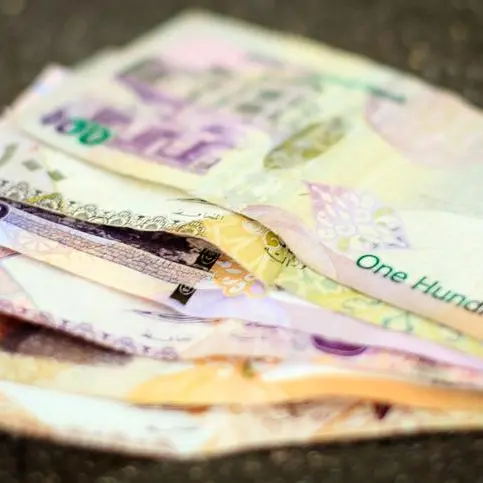PHOTO
With issuance down sharply in 2015, Mena Fund Manager looks at some of last year's trends and the outlook for 2016.
Sukuk issuance during 2015 had been tipped to reach at least $100bn but set against a challenging market backdrop, the Islamic bonds failed to reach levels anywhere near that.
In its latest forecast, Standard & Poor's Rating Service noted that issuance during 2015 reached $63.5bn a 45% fall compared with $116.4bn in 2014. Sukuk issuance this year is forecast to come in at around $50-55bn, the rating agency noted.
Much of last year's shortfall was related to the decision by large issuer Bank Negara Malaysia (BNM) to halt new issuance earlier in the year. The Malaysian central bank's decision was driven by concerns that the instruments were not reaching their intended investors, local banks, and decided to focus on shorter-term debt instead.
Yet, taking into account BNM's decision to halt issuance, levels were still down by 5% on last year's total.
Difficult environment
On one level, it is easy to understand: sovereign and non-sovereign issuers faced a difficult market environment with a number of macroeconomic headwinds facing the global economy and debt capital markets specifically.
The threat of Greek exit from the euro, lower oil prices and the slowdown in Chinese growth have all contributed to uncertainty for investors.
"Last year was quite a challenging year for the debt capital markets," says Greg Man, partner at Norton Rose Fulbright (Middle East) in Dubai. "There were a number of macroeconomic factors last year that led to a lot of market turbulence, which affected issuance more generally. Certainly, it was a relatively slow year."
Another hindrance has been the complexity of structuring the Shariah-compliant bonds in comparison with conventional bonds.
"Overall demand in the sukuk market was not as strong as in 2014 in light of the global economic slowdown," says Michele Leung, director of fixed income indices at S&P Dow Jones Indices.
"There was some new issuance of US dollar-denominated sukuk in 2015, compared with previous years with respectable levels of issuance despite the challenging market conditions," says Leung.
"If you look at issuance by country in 2015, you don't see much issuance coming from Saudi Arabia or Turkey. Issuance from Indonesia and the UAE is stable, according to the Dow Jones Sukuk Index."
There were also new innovations in the market, such as the UK Export Finance-backed sukuk issued last year. The $913m deal involving Dubai-based airline Emirates was supported by the UK government agency to support the purchase of two Airbus A380 aircraft.
"What it means for the future is that, given that all parties were happy with the deal, we have heard that UKEF have been pushing other airlines to consider doing something similar," says Man. "They've also stated that they would be happy to use their guarantee in a similar manner for other asset classes as well, not just aircraft."
Performance and outlook
While the level of issuance may have been lower than the prior year, the performance of the asset class has also been weaker during 2015.
The S&P Mena Sukuk index delivered a 1.1% return during 2015, a fall from the 5.5% gain recorded in 2014. Its performance was also slightly weaker than the conventional bond-focused S&P Mena Bond index, which generated a 1.8% gain during 2015. In comparison, the Dow Jones Sukuk Higher Quality Investment Grade Index was up by 1.0% over the year and the Dow Jones Sukuk Total Return Index (ex-Reinvestment) rose by 1.2%.
Despite the weaker performance of sukuk indices during 2015, the bonds remained an attractive alternative to the region's embattled equities markets.
As the ongoing fallout from weaker commodities prices, outflows from emerging markets and low Chinese growth continues to take a toll on the share prices, sukuk could offer investors a potential safe haven.
The drop-off in oil prices has had a big impact on many asset classes in the region. The knock-on effects of lower oil revenues have included liquidity constraints for the region's banking system, which could in turn force borrowers to the debt capital markets and to sukuk.
However, Norton Rose Fulbright's Man says potential sukuk issuers may be forced to contend with smaller issues and queries over the pricing of the Islamic bonds.
As liquidity becomes an issue for the banking sector, Man says some financial institutions could turn to sukuk as a way of shoring up regulatory capital positions.
He says the law firm had acted for Albaraka Türk towards the end of 2015 on the first ever Basel III-compliant Tier 2 sukuk.
"There are certainly a lot of potential issuers here in the region that still need financing, the debt capital market and sukuk market might be a potential source of funding for them," says Man.
"Some people have been quite pessimistic about what the year might hold but in contrast others fare extremely optimistic and think it might be a strong year, I suspect that in reality things will probably fall somewhere in between those two different views."
Backing for the bonds seems to be growing both in the region and beyond. Speaking in Kuwait in November, IMF head Christine Lagarde noted the challenges facing the sector highlighting the need more regular sovereign issuance at different maturities and development of secondary markets.
"Sovereign sukuk plans need to be embedded in governments' debt management strategies," she said. "And the market needs to be supported by strong legal and regulatory frameworks. The latter would help address persistent uncertainty over investors' rights."
Yet, with low levels of issuance being forecast for 2016, it remains to be seen whether the asset class will continue to attract interest from many new issuers.
© MENA Fund Manager 2016












